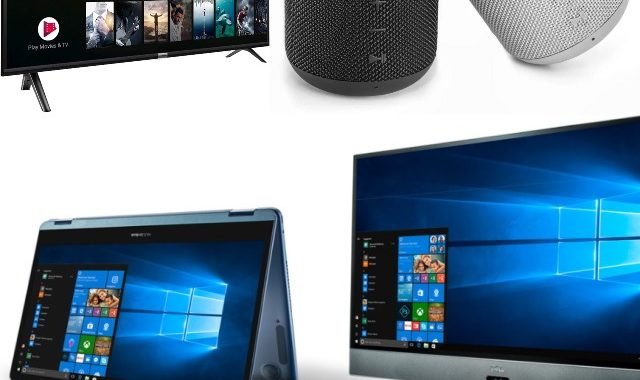The Best External Hard Drives and Portable SSDs of 2020

Getting the best external drive or best portable ssd for your needs is important. Whether you’re running out of space on your laptop or you want to back up your photos and videos, desktop-bound and portable storage has never been cheaper.
Carrying your important data has become a lot safer and easier ever since solid state drives (SSD) went mainstream. They are compact and have no mechanical parts allowing you to slide one inside your pocket and never ever worry about it. Be it backing up your PC or quickly transfer files between two computers, or even Android smartphones, an SSD is just the perfect device to help you in such situations.
While it may appear straightforward, there are numerous things to be considered before buying an external SSD.
To get you started in the right direction toward a solid add-on backup/storage solution for your needs, below are few of the best external SSD and hard drives:
ADATA SE800

| Pros: |
| Small, light, and fast. Highly durable. Reasonable cost per gigabyte. USB-C and USB-A cables included. |
| Cons: |
| The provided cables are on the short side. |
Our Verdict: The ADATA SE800 external SSD is everything you want in a shirt-pocket solid-state drive: sleek, tough, affordable, and snappy. It will make an excellent addition to your kit.
SanDisk Extreme Pro Portable SSD (1TB)

| Pros: |
| 10Gbps performance Consistent write performance Attractive aesthetics Weather-resistant 5-year warranty |
| Cons: |
| Expensive No power indicator light |
Our Verdict: For those who don’t like the slowdown of most SSDs when working with large datasets, SanDisk’s Extreme Pro portable SSD is a top choice. It is a true Pro 10Gbps external SSD.
WD My Passport (5TB)

| Pros: |
| Competitively priced AES 256-bit hardware encryption Solid software suite 3-year warranty |
| Cons: |
| Dated Micro USB connection Slides around on your desk |
Our Verdict: WD’s My Passport is slimmer than ever and affordably priced. With a 3-year warranty and hardware encryption, it’s a well-backed and secure option for those looking for dense portable storage
Samsung Portable SSD X5:

| Pros: |
| Extremely fast data transfer speeds Thunderbolt 3 and PCIe NVMe interfaces Multiple capacity options Sleek design. |
| Cons: |
| Expensive Heavy No USB support Difficult to connect to Windows PCs. |
Our Verdict: The sleek, expensive Samsung Portable SSD X5 offers the fastest single-drive external storage money can buy, but it’s suited mainly to well-heeled content-creation pros using late-model Macs.
Plugable 2TB Thunderbolt 3 External SSD NVMe Drive:

| Pros: |
| High-performance Good looks and cooling Competitive pricing Up to 2TB capacities |
| Cons: |
| Short integrated cable |
Our Verdict: Plugable’s new Thunderbolt 3 NVMe external SSD offers great performance at a price undercuts the competition. It’s an excellent value, but there are some compromises that come with that cheaper price tag.
We suggest you to choose an SSD over an HDD, because:
With zero moving parts, an SSD will be much more reliable than a standard hard disk in the long term. This also helps it in delivering more consistent results while ensuring minimum access times.
All your stored files will be transferred and opened within seconds instead of minutes. Using the modern USB Type-C interface, many newer SSDs can read files at a rate of not less than 500MB per sec, which is several times faster than any hard disk.
Since there are no mechanical parts, the SSDs don’t make any noise even under heavy load and also emit less heat.
Your data on an SSD is much more secure since it is immune to magnetic fields, unlike a conventional HDD. You get all this, and much more, packed inside a compact body that even consumes less power.
Things to Look Out for While Buying An External SSD
Storage Capacity
For this, you will have to create a perfect balance between the storage capacity you need and the amount you are willing to pay. If you look for it, you can find a portable SSD with storage capacity as little as 128GB and it can go all the way up to 2TB, which may cost a bomb. You must know how much storage you need and make sure to leave some headroom to maintain optimum performance over time.
Performance
The main reason you are willing to choose an SSD over an HDD the superior transfer speed offered by the former. There are many factors affective this speed, like the type of flash storage used and the generation of USB the SSD supports. Most consumer grade solid state drives offer up to 550MB per sec of reading speed over a USB Type-C cable, while there is an emerging category offering a much higher speed of 2,800MB per sec.
Security
You will definitely want to keep your data inside the SSD safe and in some cases, the SSD too. Many manufacturers are including rugged features with their products to make their SSDs capable of running even in rough conditions and are capable of withstanding a few drops. Besides this, you must also ensure that the drive’s software supports hardware encryption along with the support for password protection.
Pricing
As mentioned previously, you need to create a balance between the amount of storage you need and your budget, and that’s because a typical SSD will cost several times more than an HDD with similar capacity. Over the years, the SSD prices have definitely plummeted but they continue being a bit pricier than their mechanical counterpart. You must meet somewhere in the midway to avoid going over budget.






